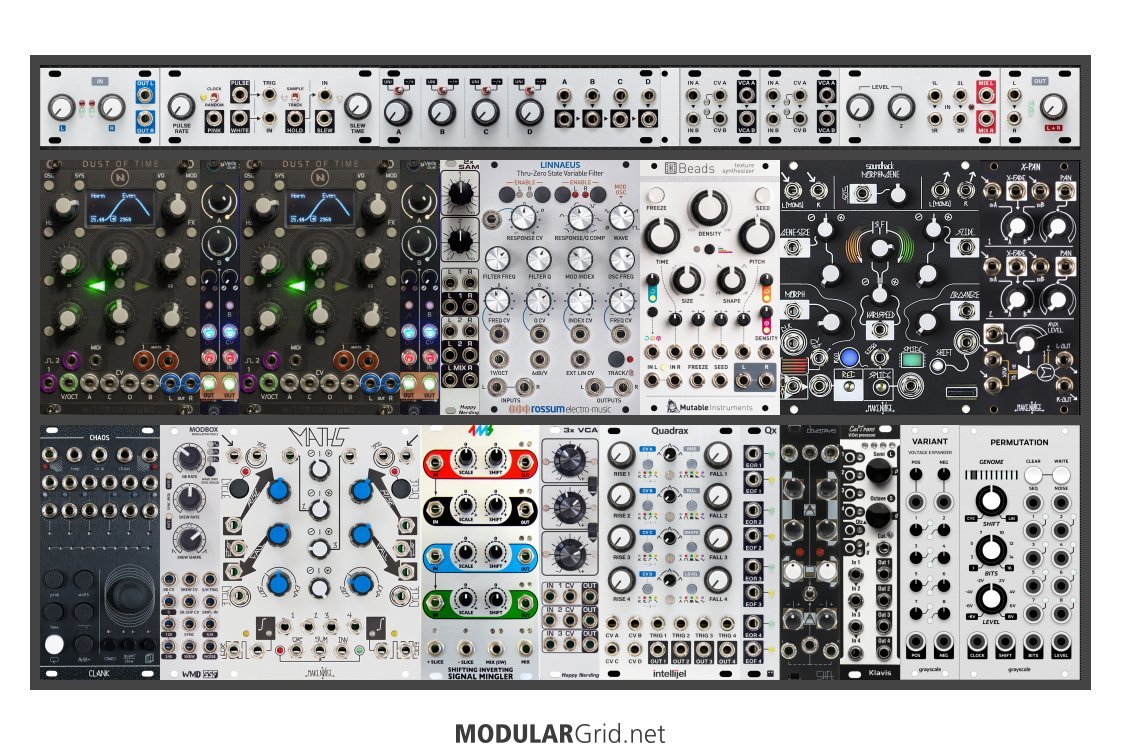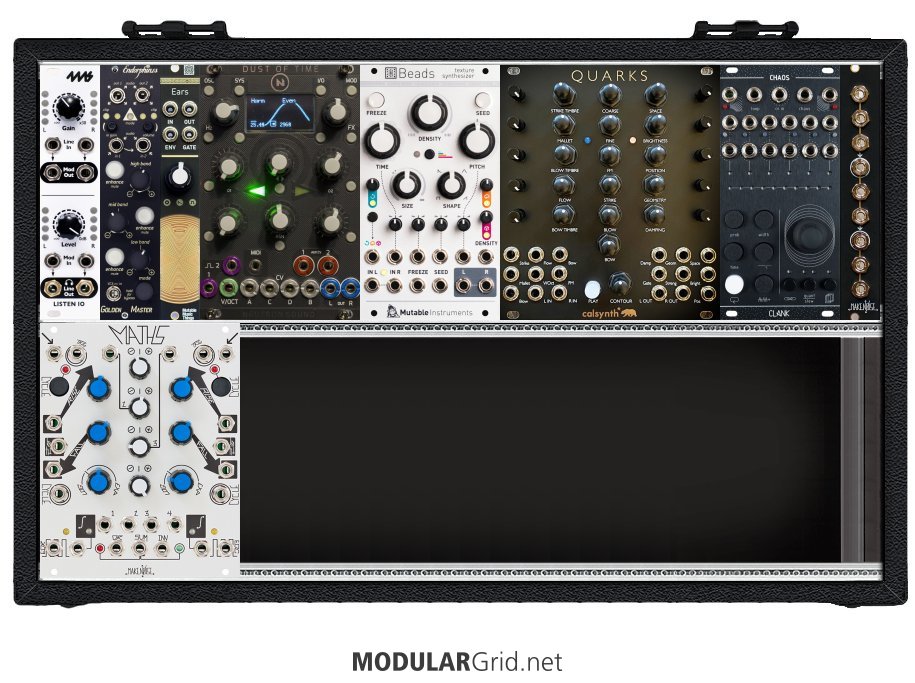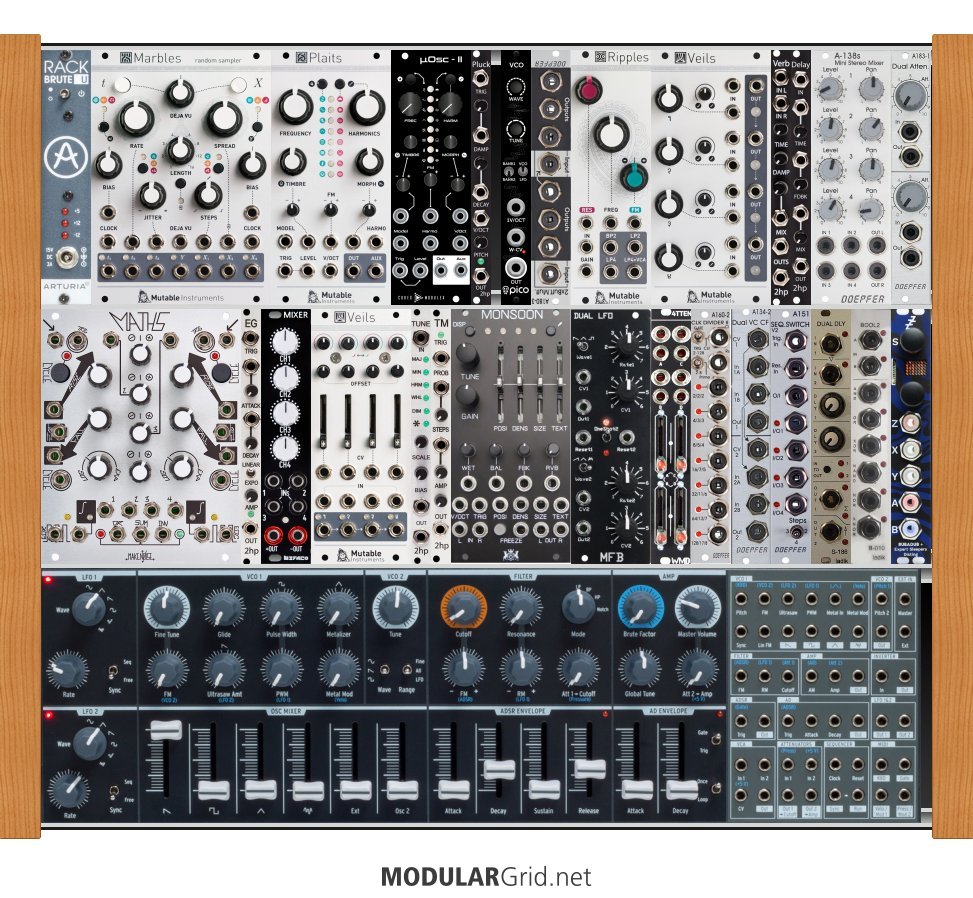Well, $2k won't cut it. For one thing, granular oscillators ain't cheap. Secondly, in order to get the modulation section to have "as many possibilities for a kind of 'controlled chaos' as possible", that required quite a bit of beef-up and some interesting modules that you don't normally encounter. And lastly, the 2 x 84 cab just wasn't cutting it as far as fulfilling either of those two points. So, I expanded the hell out of this by sticking the build into an Intellijel 7U x 104 cab, which then ALSO gave me a tile row for handling the end of the audio chain and putting in some extra attenuverters/mixing, their Noise Tools, plus a stereo audio in. The results:

OK, this thing kicks MASSIVE ass as far as stochastic-based work is concerned. And the audio chain...magnificent. Here's what's there...
Tiles: Stereo audio input (the jacks are on the case), Noise Tools, QuadrATT, two pair of VCAs, stereo submixer (allows you to fly the Beads or the Morphagene in over your stereo mix...very effective way to control that), then the stereo output.
Row 2: TWO Dust of Time oscillators, each paired with a dual VCA cloned from the Veils VCAs for their level control. 2xSAM then allows you to mix these two stereo feeds, or to control their levels manually without mixing. Then a Rossum Linnaeus stereo filter gives you thru-zero FM over your filter, plus loads of other modulation possibilities over the timbre. Beads is next, then a Morphagene allows you to loop segments of the audio at will, or under the stochastic control from the next row. The X-Pan then lets you mix all of your stereo sources in various ways, with CV over crossfading on the two stereo main inputs and CV over panning.
Row 3: This is where the magic happens. The Clank Chaos is at left for ease of access. Then a Modbox dual LFO gives you some basic modulation curves. Maths is next...then one key module, the 4ms SISM, which lets you reprocess and mix all of your modulation signals while having CV control over mixing, offsets, etc etc. After that is a Happy Nerding 3xVCA...DC-coupled VCAs for modulation level control. A Quadrax + Qx gives you four loopable envelope generators, with the Qx letting you cascade the entire EG complement if desired. The EOR/EOF trigger outs can also be used to trigger other modules. After that, a Dovemans Dual Window Comparator can pick off several gates from modulation curves as desired. Then a Klavis Caltrans quad quantizer lets you take modulation sources and, by using the various trigger/gate functions, pick off four different CVs from this. Lastly, there's a Greyscale Permutation stochastic sequencer with its Variant expander to allow the Permutation to generate two channels of CV along with its other duties.
So, no...it doesn't cost $2k. More like about $6k with the case. BUT...this is a super-comprehensive stochastic composition system with the granular synthesis you want, plus some audio extras to make the possibilities there go thru the roof! You won't (actually "can't") exhaust this, as there's so much potential in the modulation row to create endless variation and chaos-based activity that there's not really any way to create quite the same thing twice. And once patched, it'll roll right along with as much or as little input you want to utilize. More spendy...but with this, you 100% get what you're paying for.





